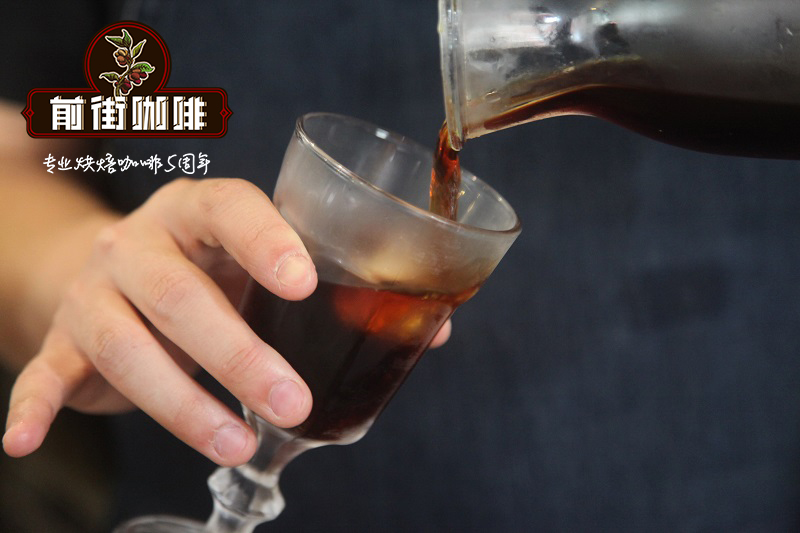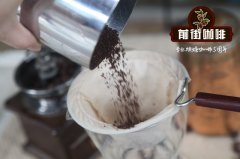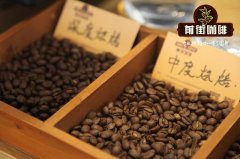Costa Rica Amapola Estate Coffee How to Drink_Costa Rica Tara Beads Coffee Brewing Advice

Professional coffee knowledge exchange more coffee bean information please follow the coffee workshop (Wechat official account cafe_style)
Costa Rica
Costa Rica is located in the Central American isthmus, latitude 10 °north, longitude 84 °west. Facing the Caribbean Sea to the east and the North Pacific Ocean to the west, it is located in the volcanic belt of low latitudes in Central America. The central plateau and mountains are about 800m above sea level and 2000 meters above sea level, which is suitable for coffee growth.
Costa Rica, with its fertile volcanic soil and good drainage, is the first country in Central America to grow coffee and bananas for commercial value. Coffee and bananas are the country's main exports.
Why is it called Tarazhu?
The most famous large planting area in Costa Rica is Tarrazu, one of the world's major coffee producers, near the capital, San Jose. The average latitude here is the highest, the climate and soil conditions are excellent, and Costa Rican coffee has a light and pure flavor and pleasant aroma, which makes Costa Rica the most famous and generally recognized as the best coffee producing area. Sanshui River (Tres Rios) is a famous small producing area in Tarazhu.
Altitude characteristics
High-quality Costa Rican coffee is "extra hard beans" (SHB), which can grow at an altitude of more than 1500 meters. The higher the altitude, the better the coffee beans, not only because the higher altitude can increase the acidity of the coffee beans and thus increase the flavor, but also because the night temperature at the higher altitude is lower, which can make the trees grow slowly, thus making the coffee beans have a stronger flavor. In addition, the sufficient rainfall caused by the drop at high altitude is also very beneficial to the growth of coffee trees.
However, the increased additional transport costs at high altitudes and the reduction in coffee profits must also be taken into account. To this end, Costa Rica's coffee industry has adopted new technologies to increase efficiency, such as using "electric eyes" to select beans.
Close-up of raw beans
Costa Rican coffee is 100% high-quality Arabica beans. Under the strict regulation of the government, the coffee industry organization is very perfect. By the way of manual picking, only naturally ripe red fruits are picked, mainly by clean washing processing method. After several times of manual selection, the raw beans are of uniform size and excellent quality.
Coffee farming is a more advanced profession in Colombia, so the status of coffee farmers is very high.
In 1897, citizens of the capital witnessed the completion of the National Theater donated by coffee tycoons. Coffee wealth brings stability to Costa Rica's politics, economy and democracy, which is rare in Central American countries. In addition, Colombia also has laws that only allow the planting of Arabica, and Robasta is a "contraband" in its territory, which is also the only initiative seen in the world.
Flavor introduction
The coffee beans produced in the high latitudes of Costa Rica are world-famous. It is precisely because the coffee beans here have been carefully processed, so there is such a high-quality coffee: mild taste, moderate sweet and sour taste, good flavor and ideal acidity. The degree of aroma varies with the degree of baking.
Analysis of Costa Rican coffee brewing
Recommended cooking method: hand flushing
Degree of grinding: 3.5 (Japanese little Fuji R440)
V60 filter cup, 15g powder, water temperature 90 degrees, grinding degree 3.5, ratio of water to powder 1:15
Stew with 40 grams of water for 30 seconds
Section: water injection to 107 g cut off water, slow water injection to 227 g.
That is, 40-107-227
The total time is 2 minutes and 02 seconds.
BG grind 4QM 90 degrees water temperature.
Bean grinder
Grinding degree
Powder quantity
Filter cup
BG
4Q
15g
V60
Water temperature
Stuffy steam
The second stage of water quantity
The third stage of water quantity
Total time 2:02
90 degrees
40g water for 30s
67g
120g
Total water volume: 227g
Sweetness: ☆☆☆
Acidity: ☆☆
Bitterness: ☆
Other suggestions for trickling extraction:
French kettle: recommend 3.5murmur4 grind degree, water temperature 91 degrees.
END
Important Notice :
前街咖啡 FrontStreet Coffee has moved to new addredd:
FrontStreet Coffee Address: 315,Donghua East Road,GuangZhou
Tel:020 38364473
- Prev

Coffee hand Analysis of Aguirate Manor in Costa Rica _ Coffee Manor of the Aguilera Family
Professional coffee knowledge exchange more coffee bean information please pay attention to the coffee workshop (Wechat official account cafe_style) Costa Rica is located in the Sino-American isthmus, the territory is full of volcanoes, with the natural advantages of sunshine and land, the climate is also reconciled by Pacific and Atlantic currents and sea breezes, the output of coffee is deeply affected by the local micro-climate and soil conditions, coupled with a stable level.
- Next

Costa Rica Fire Phoenix Manor Coffee brewing sharing _ the difference between Fire Phoenix Black Rose and Sapphire
Professional coffee knowledge exchange more coffee bean information Please follow Coffee Workshop (Wechat official account cafe_style) Fire Phoenix Manor, located on the fertile hills of the Poas volcano at the bottom of the central Costa Rican coffee valley, is the first producer in Central and South America to start producing honey-treated and sun-cured coffee. The landowner thinks that organic farming
Related
- Detailed explanation of Jadeite planting Land in Panamanian Jadeite Manor introduction to the grading system of Jadeite competitive bidding, Red bid, Green bid and Rose Summer
- Story of Coffee planting in Brenka region of Costa Rica Stonehenge Manor anaerobic heavy honey treatment of flavor mouth
- What's on the barrel of Blue Mountain Coffee beans?
- Can American coffee also pull flowers? How to use hot American style to pull out a good-looking pattern?
- Can you make a cold extract with coffee beans? What is the right proportion for cold-extracted coffee formula?
- Indonesian PWN Gold Mandrine Coffee Origin Features Flavor How to Chong? Mandolin coffee is American.
- A brief introduction to the flavor characteristics of Brazilian yellow bourbon coffee beans
- What is the effect of different water quality on the flavor of cold-extracted coffee? What kind of water is best for brewing coffee?
- Why do you think of Rose Summer whenever you mention Panamanian coffee?
- Introduction to the characteristics of authentic blue mountain coffee bean producing areas? What is the CIB Coffee Authority in Jamaica?

